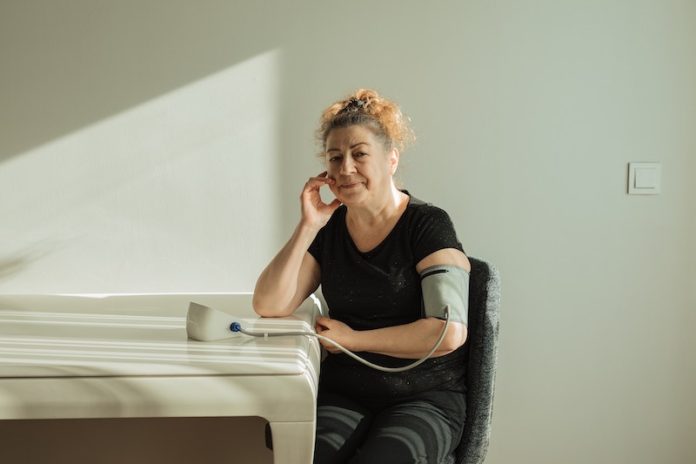
High blood pressure is a common issue that affects one in five people in Sweden and is a major culprit in heart-related diseases globally.
Scientists from Lund University have embarked on a journey to understand how our blood vessels, the highways for our blood, react to the pressures they’re put under.
Simply, as we grow older, our vessels, which have a clever way of changing their width to manage blood flow and pressure, become less flexible.
This can lead to an increase in blood pressure and, in severe cases, a potentially life-threatening condition known as an aneurysm, where a blood vessel swells and can burst.
Managing high blood pressure is vital to prevent dangerous complications, but why do our vessels become less efficient at dealing with it as we age?
That’s where a tiny molecular sensor in our blood vessels, comprised of proteins named YAP/TAZ, comes into play.
This sensor has the crucial role of maintaining the balance and well-being of our vessels, especially when they’re subjected to higher pressures.
The Sensor’s Protective Role and the Risk of its Deterioration
In a study, mouse models were used to delve deeper into how these sensors worked. The YAP/TAZ proteins, when functioning optimally, help manage the vessel’s response to high blood pressure, preserving its structure and integrity.
The disturbing reality discovered was that even at normal blood pressures, if the sensor was absent or not working properly, the blood vessels suffered damage.
This tiny molecular duo switches the smooth muscle cells in the vessel walls into a type that forms cartilage, which leads to stiffer, inflamed, and scarred vessels.
As we age, the levels of YAP/TAZ decrease, paving the way for potential issues like atherosclerosis, strokes, and other health problems, such as vascular dementia.
The Lund University researchers discovered that this decrease in YAP in humans, much like in the mice, might indicate that the YAP/TAZ sensor has a protective role in humans too, shielding against damage caused by high pressure in the vessels.
Bridging the Gap: From Understanding to Potential Treatments
The mission now is to understand why age negatively impacts the YAP/TAZ sensor and how we might influence its signaling pathways to mitigate the advancement and worsening of vascular disease.
Interestingly, these findings bring to light why exercise, which temporarily raises our blood pressure and activates the YAP/TAZ proteins, might be beneficial in readying our vessel walls to handle future episodes of high blood pressure more effectively.
Although many can manage their high blood pressure with medications, there’s a significant portion of individuals – about 15% – who do not respond to such treatments.
Furthermore, a larger group struggles to control their blood pressure due to suboptimal lifestyle habits. Thus, unveiling alternative ways to safeguard the vessel wall is imperative.
“We need to comprehend the mechanisms behind pressure-induced vascular damage to ultimately discover alternative methods to shield the vessel wall,” expresses Sebastian Albinsson, a key player in the research team.
The elucidation of the role of the YAP/TAZ sensor in protecting against pressure-induced vascular damage opens new avenues for research.
Such work is crucial not only for extending our understanding of vascular diseases but also for the development of potential new treatments.
In a world where cardiovascular disease reigns as a leading cause of death, exploring every avenue, understanding every mechanism, and developing every potential treatment is paramount for turning the tide against this global health adversary.
If you care about high blood pressure, please read studies about a common and unrecognized cause of high blood pressure, and this small habit can greatly benefit people with high blood pressure, cholesterol.
For more information about high blood pressure, please see recent studies about more efficient way to treat high blood pressure, and 12 foods that lower blood pressure.
The research findings can be found in JCI Insight.
Follow us on Twitter for more articles about this topic.
Copyright © 2023 Knowridge Science Report. All rights reserved.



